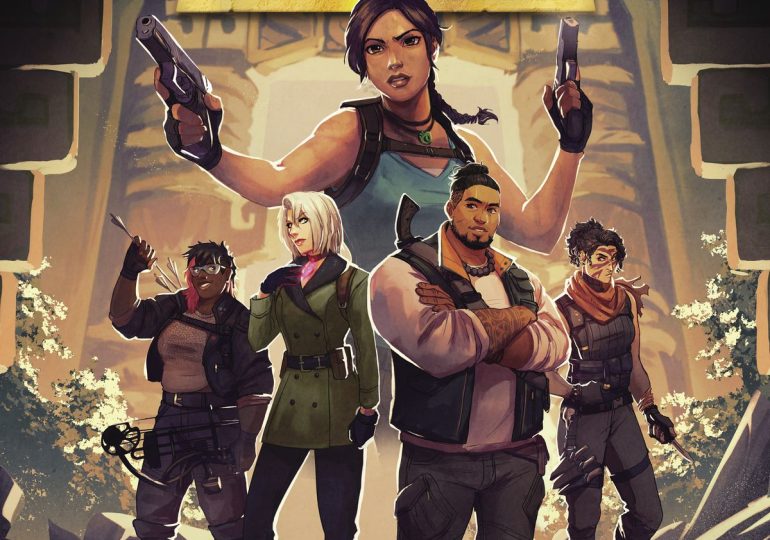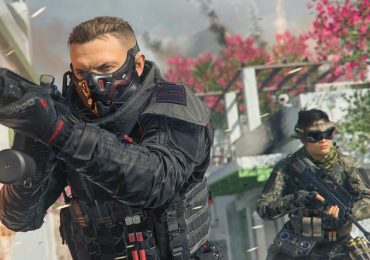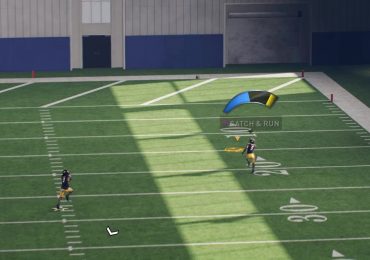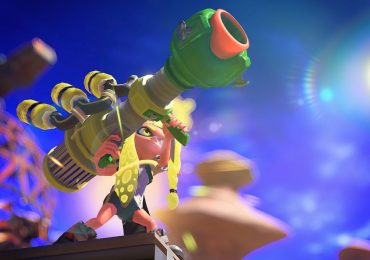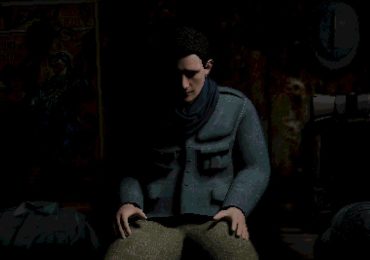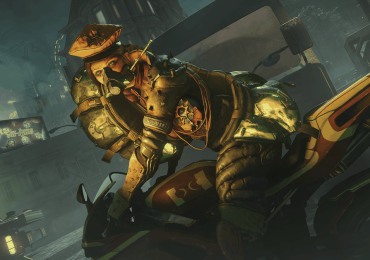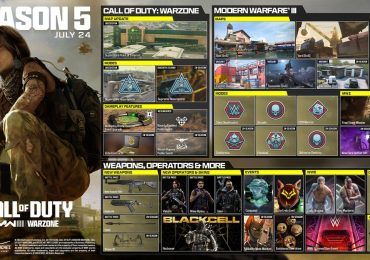The Tomb Raider franchise, as reimagined by developers at Crystal Dynamics, will be brought to life as a new tabletop role-playing game called Tomb Raider: Shadows of Truth. But don’t expect anything as simple as a 5th edition Dungeons & Dragons clone. While combat and exploration are more or less settled science in the world of TTRPGs, Lara Croft’s latest effort hopes to uncover the far more precious treasures of open-ended narrative design and character development.
The game, which has already been in production for over a year at Blades in the Dark publisher Evil Hat Productions, will blend two groundbreaking RPG systems: Powered by the Apocalypse and Forged in the Dark. The goal is to create a modern and inviting expression of the Tomb Raider universe. Polygon recently spoke to the game’s team, including Evil Hat founder Fred Hicks, Tomb Raider franchise narrative director at Crystal Dynamics John Stafford, and the game’s lead writer, the author of the Hellboy-inspired Apocalypse Keys, Rae Nedjadi.
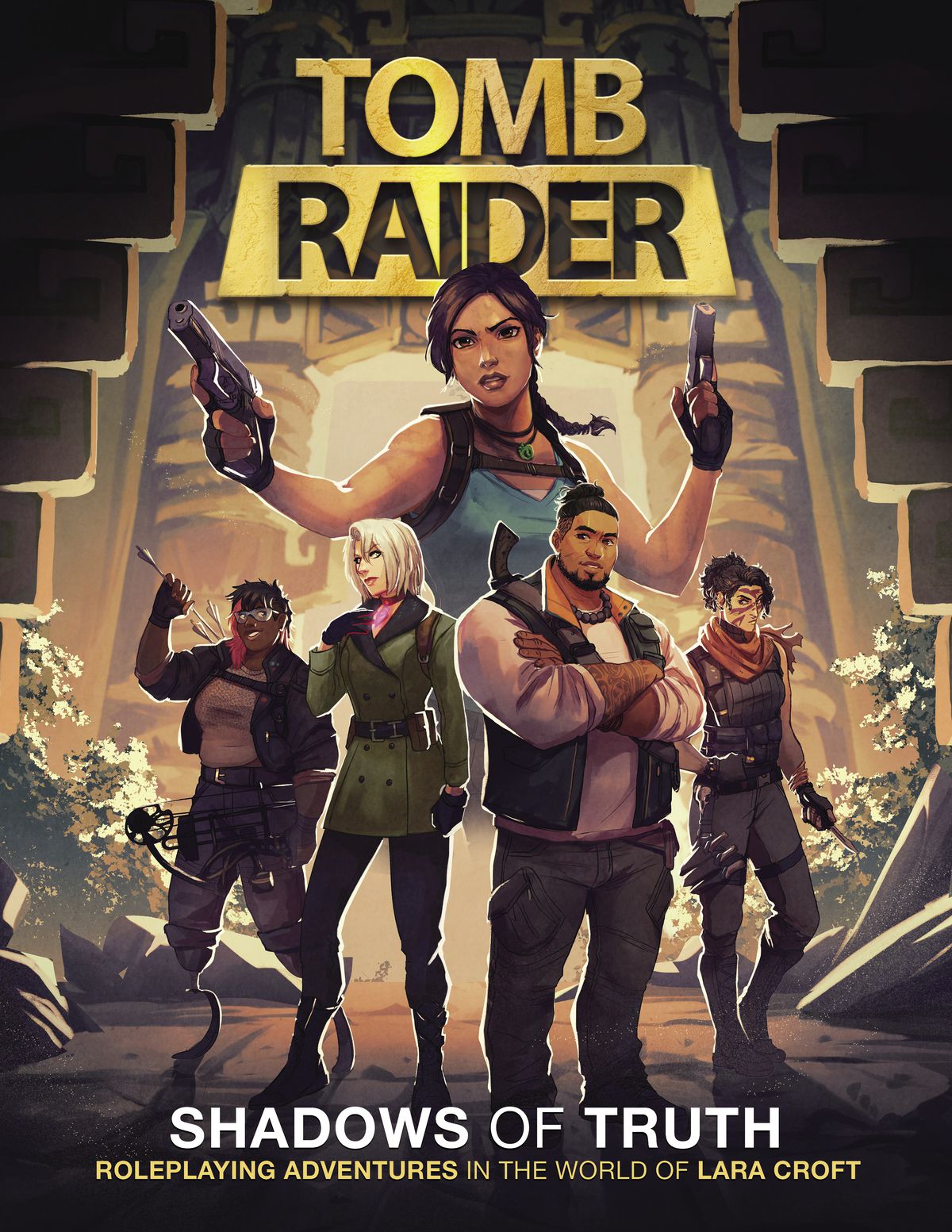
“We have this really curious thing at Evil Hat where generally anything licensed that we’ve done […] the licensors have sought us out,” Hicks told Polygon. “This was true with The Dresden Files Roleplaying Game that was the inception of the company in the first place. Crystal Dynamics emailed us one day, and […] when an opportunity like that comes knocking you take it seriously.”
“Meeting with them, I got a sense that they understood the franchise well, they understood how we approach storytelling, character-based storytelling,” said Stafford. “We love characters to have beginning, middles, and ends, and choices they make, and they’re mirroring that in the design. That was appealing to us, that it really marries well with how we like to tell stories.”
Nedjadi, a self-described Tomb Raider fanboy, clearly relished the opportunity to work on the project, a process that kicked off with an epic replay of the original video games.
“Lara has been several different people across the franchise,” Nedjadi told Polygon. “[But] Tomb Raider (2013), that was the first time I felt like, in an action-adventure game, [that] they were trying to say [something about] what would drive a person to survive and use violence in order to keep moving forward. What does that look like? It felt like they were getting better at it each and every game in that series.”
To mirror the nuance of Crystal Dynamics’ evolution of the character and her world, Nedjadi and their writing team — which includes Evil Hat’s Hicks and Sean Nittner, sensitivity consultant Pan Punzalan, as well as author and game designer April Kit Walsh (Thirsty Sword Lesbians) — built the core of the game around a discrete set of player actions, called moves. At the center of each move isn’t a number or a bonus to hit, but a question that — once answered — will add to a player’s growing dice pool. Those at the table will have to grapple with the answers to those questions, no matter how the dice happen to fall.
“The particular design choice that Rae and April made early on was that instead of having stats, […] every move has its own question that you ask [as you build up your dice pool],” Nittner explained. “If you’re trying to explore an area, you need to have the time to do it. But then there’s also a personal move that every character asks that [helps bring] your characters’ issues, complications, and strengths into this particular motion. You want to say yes to these things, because the more you say yes the more dice you get. So it’s that reminder to bring that element of your character in.”
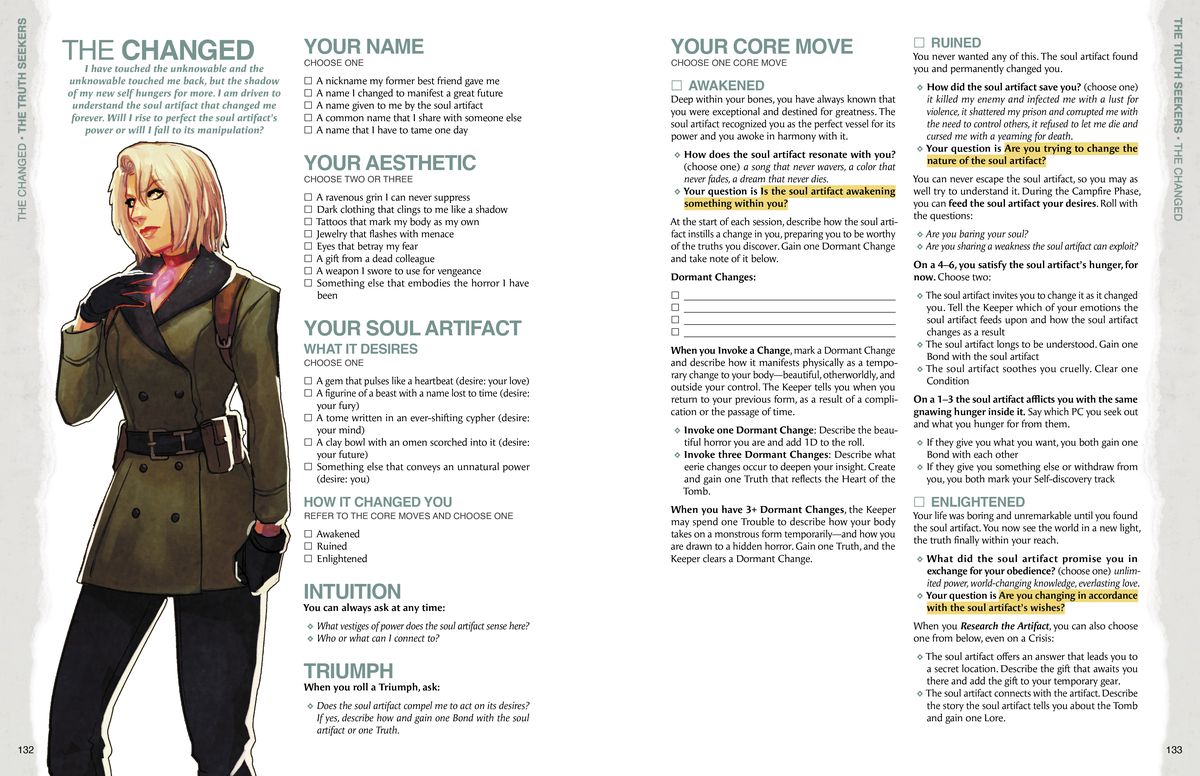
The game is still an early draft, but the more than 200-page manuscript shared with Polygon has key elements already in place. Take the early version of the game’s Legacy class, also referred to as a playbook. A Legacy character is both “burdened and privileged by those who came before [and] a scion of great power and a history of coveting the Truth.” Like Lara, players who choose the Legacy playbook will find themselves asking questions like Are you living up to your legacy?, Are you healing your legacy?, and Are you defying your legacy? It’s the answers to those questions, expressed through a character’s imagined motivations and a roll of the dice, that will bring an outcome to a given situation — and add richness to the narrative being created at the table.
“It’s that reminder to bring that element of your character in [with every action],” Nittner said. “The Reclaimer may be asking, Am I reinforcing the beliefs of my people? Or, if they’re playing the Rebel archetype, they could be asking, Am I going against the beliefs of my people? They have to constantly be thinking about how their actions correlate with the values of their [character].”

“It’s not just inside your character, though,” added Hicks. “One of the really great things about the questions approach that Rae and the design team hit on is that you’re both doing character reflection, introspection, and externalizing it by saying how you’re answering — yes or no — to the question. There’s also a bit of world-building that’s happening collaboratively every time somebody picks up the dice because you might assert something that’s a new detail on the scene that wasn’t there before, but which flows with the direction of the answers given. And I think that keeps kind of everyone strongly engaged at the table, and it also makes sure everyone is seeing inside of the characters and building connections to the world simultaneously.”
While things like hit points and healing will have their place, Shadows of Truth states that the true downfall of a character can only come when they push themselves so far as to stumble into their Shadow Self. It’s a place that can only be reached in the most dire circumstances, and it represents a character “giving in to the darkest thoughts and tendencies that haunt” them.
“The only way you can get out of it is if somebody helps you come to your senses,” Hicks said. “That’s when Jonah [Maiava] comes up to Lara and is like, Sit down. We need to talk about where you’re going. It’s not the right way.”
Repeatedly falling into the Shadow Self, whatever the reason, can also be a way to cycle characters out of a given campaign.
“The Shadow Self method that Rae and team came up with […] not just like one story moment — it’s an entire story arc,” said Hicks. “You rewound a bit. You didn’t fall in the spikes. You pulled it out at the last second. But it’s rattled you enough that your perspective on yourself has changed over time, and it’s only your friends who are going to be able to pull you back from that brink.”
“I want alternatives to death to be more interesting than death,” Hicks added.
Tomb Raider: Shadows of Truth will be brought to life through a crowdfunding campaign planned for sometime in 2025. Evil Hat says the core rulebook will be bigger than anything the company has yet produced — both in page count and in the size of the volume itself, which will be much larger than the company’s now standard 6-by-9 format. But that final push can’t be accomplished without an initial playtest, which includes several adventures that Nedjadi and their team are excited to share. The first deals with the legend of the Bukunawa, a mythical serpent-like horned dragon known in the Philippines.
“I’ve been really surprised with how well it’s been working and how enjoyable and super fun it is,” Nedjadi, who is Filipino, said. “My goal in [presenting] a post-colonial, anti-colonial design is to show other ways to have fun. Showing different perspectives. It is not my intention to be punishing, or to be judgmental. It’s really just to show a different perspective coming from a place of respect and reverence for these people, their stories, and their living history.”
“Working with Crystal Dynamics has been really fascinating,” Nedjadi added, “because they’re really excited about us bringing in new lore. […] Even though we’re bringing in new places, and new artifacts, and new things, I’m trying as much as possible to have it be in the spirit of Tomb Raider.”
More information on Tomb Raider: Shadows of Truth, including details on how to participate in the upcoming playtest, will be available on the Tomb Raider website.
